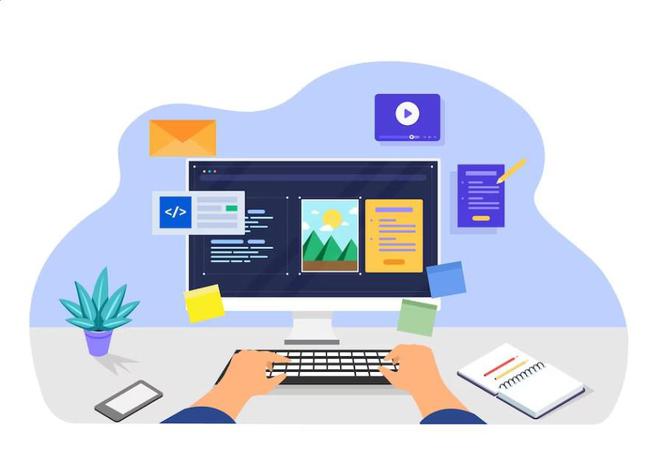Computers: A Comprehensive Exploration of Evolution, Impact, and Future Trends
In the ever-evolving landscape of technology, computers stand as the bedrock upon which our modern digital society is built. From the massive mainframes of the mid-20th century to the sleek and powerful laptops and desktops of today, the journey of computers is a captivating narrative of innovation, transformation, and societal change. This article will delve into the evolution of computers, exploring their profound impact on various aspects of our lives, and peering into the future trends that promise to shape our digital world.
I. The Birth of Computers:
The genesis of computers can be traced back to the early 19th century with the invention of mechanical calculating devices. However, it was the mid-20th century that witnessed the advent of electronic computers. The Electronic Numerical Integrator and Computer (ENIAC), completed in 1945, is often considered the world's first general-purpose electronic digital computer. Weighing 27 tons and occupying a large room, the ENIAC was a far cry from the portable devices we use today.
The subsequent decades saw the evolution of computers from room-sized machines to more compact and powerful devices. The development of transistors in the late 1940s and integrated circuits in the 1960s paved the way for miniaturization and increased computing power. This period marked the transition from the first generation (1G) of computers to the second generation (2G).
II. The Rise of Personal Computers:
The 1970s witnessed a pivotal moment in the history of computers with the advent of personal computers (PCs). Companies like Apple and IBM played instrumental roles in popularizing PCs, making computing accessible to individuals and small businesses. The release of the Apple II in 1977 and the IBM PC in 1981 marked the beginning of the personal computing era.
Graphical User Interfaces (GUIs), introduced by Apple's Macintosh in 1984, revolutionized the way users interacted with computers. The mouse-driven interface and visual icons replaced command-line interfaces, making computers more user-friendly. This era also saw the emergence of software applications, further enhancing the capabilities of personal computers.
III. The Internet Age and Networking:
The 1990s ushered in the era of the internet, profoundly altering the role and capabilities of computers. The World Wide Web (WWW) became a global phenomenon, connecting people and information across the globe. The advent of web browsers like Netscape Navigator and Internet Explorer facilitated user-friendly navigation of the internet.
Networking technologies, such as Ethernet and Wi-Fi, enabled the interconnection of computers, giving rise to local area networks (LANs) and later, the internet. The ability to communicate and share information in real-time transformed how individuals and businesses operated. Email, instant messaging, and online collaboration tools became integral parts of our daily lives.
IV. Mobile Computing and Laptops:
The 21st century brought a new wave of computing with the rise of mobile devices and laptops. Laptops, with their portability and performance, became essential tools for professionals, students, and casual users alike. The introduction of ultrabooks and 2-in-1 devices further blurred the lines between traditional laptops and tablets.
Smartphones, powered by increasingly powerful mobile processors, expanded the reach of computing to every pocket. The convergence of mobile phones and computers resulted in a paradigm shift in how we consume information, communicate, and access services. Mobile apps and app stores became central to the mobile computing experience, providing a vast array of applications tailored to various needs.
V. The Cloud Computing Revolution:
Cloud computing emerged as a game-changer in the world of computing, offering scalable and flexible solutions for storage, processing, and software delivery. Cloud services, provided by companies like Amazon Web Services (AWS), Microsoft Azure, and Google Cloud, allowed users to access computing resources over the internet. This not only reduced the need for extensive on-site infrastructure but also enabled collaborative and distributed computing models.
The shift to cloud computing also had significant implications for software development and deployment. Software as a Service (SaaS) models became prevalent, with users accessing applications through web browsers rather than installing them locally. This model streamlined updates, maintenance, and accessibility, contributing to the growing trend of remote work.
VI. Artificial Intelligence and Machine Learning:
The integration of artificial intelligence (AI) and machine learning (ML) has brought about a new era of computing capabilities. Computers are no longer just tools for processing and storing information; they are becoming intelligent entities capable of learning and adapting. AI applications, from voice assistants to image recognition, have become integral parts of our daily interactions.
Deep learning, a subset of ML, has played a crucial role in advancing the capabilities of computers in understanding complex patterns and making predictions. This has practical implications in fields such as healthcare, finance, and autonomous systems. The convergence of AI with other technologies, such as the Internet of Things (IoT), is shaping the development of smart ecosystems and intelligent automation.
VII. Impact on Industries:
The impact of computers on various industries has been profound. In healthcare, computers facilitate medical research, diagnostic imaging, and patient record management. In finance, high-frequency trading, algorithmic analysis, and digital transactions rely heavily on computing power. Manufacturing processes, education, entertainment, and virtually every sector have been transformed by the integration of computers into daily operations.
VIII. Challenges and Concerns:
Despite the incredible advancements, computers and technology present challenges and concerns. Cybersecurity threats, data privacy issues, and the digital divide are among the challenges that need careful consideration. The ethical implications of AI and the responsible use of technology are areas that demand ongoing attention.
IX. Future Trends in Computing:
Looking ahead, several exciting trends are poised to shape the future of computing. Quantum computing, with its potential to perform complex calculations at unprecedented speeds, holds promise for solving problems currently beyond the reach of classical computers. Edge computing, where processing occurs closer to the data source rather than in centralized data centers, is gaining traction for its efficiency in handling real-time applications.
The continued integration of AI and ML will lead to more intelligent and adaptive systems. Augmented reality (AR) and virtual reality (VR) technologies are expanding the possibilities of human-computer interaction, transforming how we visualize and interact with digital information.
The evolution of computers from room-sized behemoths to the powerful and portable devices we have today is a testament to human ingenuity and technological progress. Computers have become ubiquitous, influencing every aspect of our lives and shaping the way we work, communicate, and access information.
As we navigate the complexities of the digital age, it is essential to be mindful of the ethical considerations, security challenges, and the need for inclusivity. The future of computing holds exciting possibilities, and as we embrace new technologies, it is crucial to ensure that they serve humanity's best interests while minimizing potential risks.
































